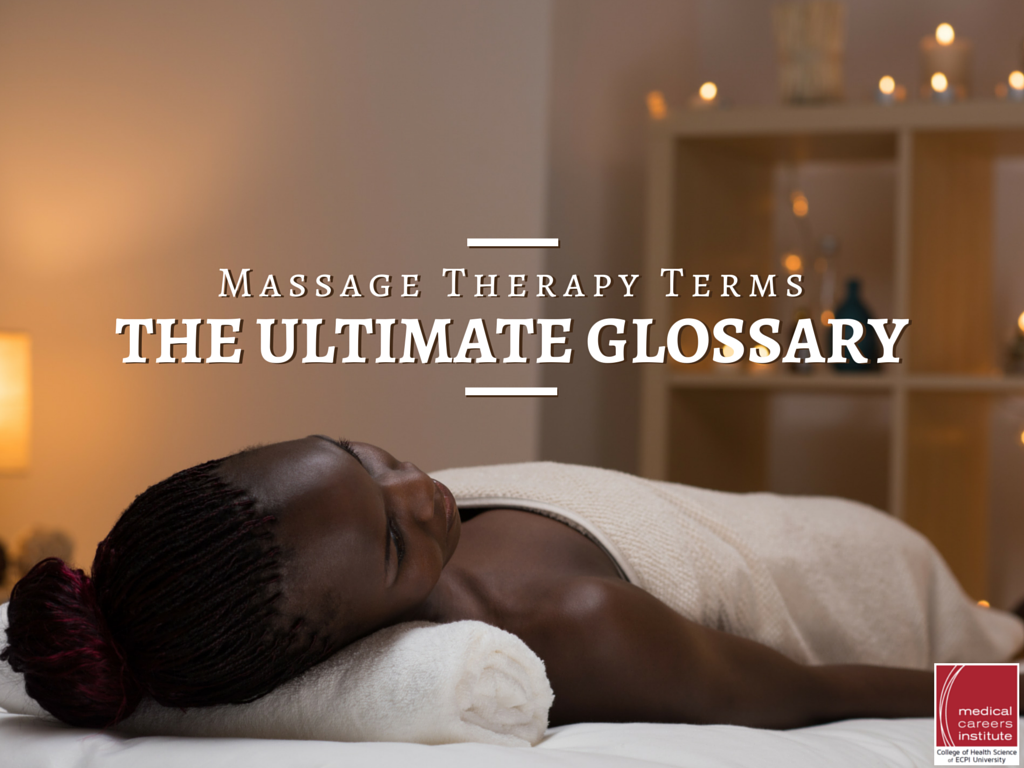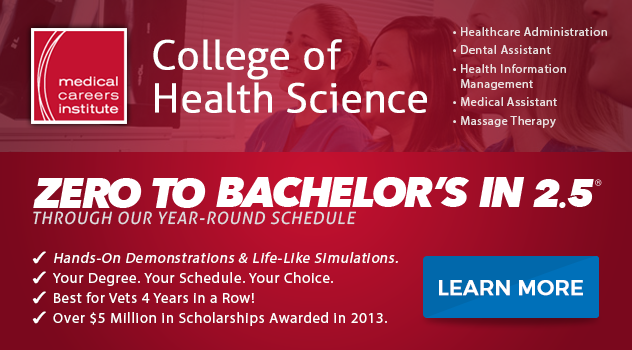
With training as a massage therapist, and after meeting state licensing and certification requirements, you could find yourself working with wildly different kinds of clients from perfectly-honed young athletes to senior citizens. The clientele list for massage therapists is varied, but whether they are Olympians or old folks, weekend warriors or stressed-out superstars, they all have one thing in common: they need you, and you knead them!
The root of any profession is its vocabulary, and the wide world of massage therapy has a rich history of interesting terms. This ultimate glossary may help you decide that an education as a massage therapist is in your future.
Acupressure—If you fear needles, acupressure is the answer. Instead of acupuncture’s long, delicate needles, acupressure uses the same “meridian points” to stimulate energy flow in the patient’s body. This is based on ancient Chinese theory, but provides pleasing relief to ancient or young patients of any nationality.
Ahhhh—This is the welcome sound your clients and patients will utter as you provide a soothing, healing touch, earning their appreciation.
Appreciation—Patients receiving massage therapy are always very grateful for the healing touch you bring, the soothing relaxation and the release of stress, tension, and pain. Expect to experience their thanks in many ways and in many languages.
Bodywork—Just as your patients’ cars need bodywork to remove life’s dents and dings, their bodies need your healing touch to improve mobility, relieve pain, and promote healing. Bodywork in massage therapy refers to all the touch and movement methods—from some 80 techniques—you apply.
Deep Tissue—Seeks to reach the most embedded muscles and connective tissue through manipulation and touch. Patients suffering chronic pain often gain quick relief from this method.
Medical Massage—A strong background in medical massage separates the party prodder offering to give shoulder rubs from the knowledgeable massage therapist. Patients struggling with disease or injury require massage that provides relief without risk of further damage. Thorough training in anatomy, kinesiology, and pathophysiology can give you that knowledge and confidence.
National Certification Board for Therapeutic Massage and Bodywork—Working under the unglamorous shorthand NCBTMB, this is the national review board for voluntary credentialing for massage therapists and bodyworkers.
Reflexology—Push and prod one place, get soothing results elsewhere. Probably the most familiar form of reflexology is foot reflexology, where pressure in the foot is intended to stimulate other body areas. Many clients simply enjoy the foot rub, which you can supplement with aromatic oils and spices, no cooking required.
Shiatsu—The Japanese term for “finger pressure” means using a concentrated acupressure technique to balance energy flow in your clients. It is a myth that the word derives from the sound patients make as you work into their sore, tired muscles and release their tension.
Sports Massage—Getting athletes in shape for competition and games means helping them loosen up and warm up. You use friction techniques and Swedish massage methods, compression and ice as a vital part of the team.
Swedish Massage—This classic massage method manipulates muscles and tissue to provide relaxation or rehabilitation. You can learn five basic strokes to get your clients to a relaxed point where they feel they are melting off your massage table.
Trigger Point—Your clients’ bodies are like a series of interconnected rivers, so pushing and prodding in one area can affect a distant spot. Trigger point massage seeks to find the hypersensitive muscle, ligament, fascia or tendon that is creating pain and stiffness elsewhere in the body. One good push, and your client feels better.
Workplace—As a Licensed Massage Therapist (in North Carolina) or Certified Massage Therapist (in Virginia), you can work in settings such as sports facilities, spas, fitness centers, doctors’ offices, physical therapy centers, hospitals, pain management centers, and resorts.
Many thanks to the incredibly hard working crew from ECPI Richmond for the wonderful post-race massage.
— Pat Pannett (@BritishPat) November 11, 2012
Ready for Massage School?
An excellent entry point to this stimulating and intriguing world of massage therapy is ECPI University’s College of Health Science, Medical Careers Institute. Through our accelerated, year-round program, you could earn an Associate of Applied Science in Massage Therapy in just 15 months! From there, you may apply to the National Certification Board for Therapeutic Massage and Bodywork (NCBTMB) to take the National Certification Exam. Reach out to ECPI University today and learn how you can have a rewarding career that truly touches others! It could be the Best Decision You Ever Make!
DISCLAIMER – ECPI University makes no claim, warranty or guarantee as to actual employability or earning potential to current, past or future students or graduates of any educational program we offer. The ECPI University website is published for informational purposes only. Every effort is made to ensure the accuracy of information contained on the ECPI.edu domain; however, no warranty of accuracy is made. No contractual rights, either expressed or implied, are created by its content.
For more information about ECPI University or any of our programs click here: http://www.ecpi.edu/ or http://ow.ly/Ca1ya.


